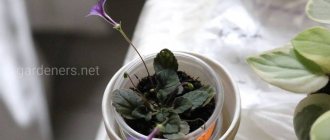Author of the article
Daria Vorontsova
Reading time: 9 minutes
AA
Turmeric is a well-known bright yellow or orange spice. Its application is truly universal. In the East, it is added to almost all dishes, and even alcoholic drinks.
The spice has antibacterial properties and can be used as a natural preservative. And finally, it is a natural dye. It gives a yellow tint to drinks and dishes.
Another way to use turmeric is to color eggs for Easter. This is completely harmless, unlike synthetic powders that appear on sale on the eve of the holiday.
We can talk about the beneficial and healing properties of the plant for a very long time. But few people know that turmeric, like ginger, is easy to grow at home on your own.
How to grow turmeric
The spice not only tastes good, but also has a beautiful appearance. Therefore, turmeric is often grown both in open space and in apartment conditions. The sowing pattern for turmeric depends entirely on weather conditions and the length of the summer period in the region.
If the warm weather lasts about nine months, then the seedlings are transplanted in the garden, provided that the harvest is harvested before the first cold weather.
In more northern regions, the plant is best grown indoors. Let's figure out how to grow turmeric in open ground?
What are the beneficial properties of turmeric?
Being a big fan of experimenting in the kitchen, I was introduced to turmeric over 20 years ago. Then the aromatic orange powder was brought by friends who worked in India. Not long ago I started growing the flower myself on the windowsill - it is very beautiful and unusual.
Turmeric is a perennial herb with large lance-shaped leaves and thick roots. All parts of turmeric are very aromatic. Essential oils give them a bright spicy smell, and natural pigments give them a yellow-orange hue.
The knowledge of Indian residents about the healing properties of the plant is confirmed by scientific research. Aromatic roots are known to have:
- anti-inflammatory activity;
- are an immunomodulator;
- normalize metabolism;
- stimulate the functioning of the digestive glands.
Regular consumption of the yellow powder from the plant's roots is believed to reduce the risk of Alzheimer's disease and certain types of cancer.
How to plant turmeric in open ground
Growing turmeric is not a onerous process, but it needs to be approached with some responsibility in order to get a healthy plant.
- Turmeric tolerates sandy and clay soil, shade and light areas well.
- It is preferable to plant turmeric in early spring, when there is no longer frost.
- Before planting turmeric in open ground, you need to prepare the area and dig it to a depth of thirty centimeters.
- The soil should be loose, so it needs to be loosened.
- Prepare holes at a distance of twenty centimeters from each other and the same depth.
- Preparing to plant turmeric. To do this, cut two sections from the rhizome and plant it in a hole so that two buds look up.
- Cover the roots with soil and water.
Transfer rules
There are 2 options for replanting a flower - autumn and spring. Both have a beneficial effect on plant development:
- Spring . Since turmeric spends the winter alone, without watering or solar heat, it needs to be awakened. To do this, prepare a fresh substrate in advance and moisten it. The root is carefully transferred to a new pot and placed in a warm place. If wintering took place in sand, then the soil mixture should have drainage, which includes it.
- Autumn before bed . Foliage is being pruned. The length should not exceed 10 cm. After excavation, the rhizome is inspected and the damaged areas are carefully removed. The resting container is small, with drainage and fresh soil. The root is completely covered.
How to care for turmeric outdoors
The plant does not require special care. It is not whimsical in germinating outdoors, but you need to adhere to certain rules in order for turmeric to feel great, namely:
- Water regularly because turmeric loves moisture.
- The water should be settled and warm.
- The next watering is carried out when the top layer of soil dries.
- Turmeric requires fertilizing containing phosphorus. If the fertilizer is bought in a store, then the dosage should be reduced by half than indicated on the package. The first feeding is done when the inflorescences are forming. The second time you need to apply fertilizer when flowering is over and two weeks have passed.
- Turmeric likes its shape to be maintained and dried foliage and flowers removed. Therefore, you need to frequently look through the plant and pick off everything that has already bloomed and dried out.
- The soil must be loosened after each watering or after natural precipitation. Destroy weeds.
When the above-ground part begins to wither, it is time to harvest. To do this, the rhizomes are dug up before frost and washed from the ground.
Place in boiling water for one minute and place on a piece of absorbent fabric in a room with ventilation. After two weeks, the raw materials are ready for storage.
As you can see, caring for turmeric does not require much expense, but you need to spend time and be attentive to the plant.
Conditions: temperature and lighting
Turmeric loves moisture, warmth and light. The temperature for growing should not fall below 20°C. In the cold, rhizomes may begin to rot. A lot of light is required, but not direct sunlight, but diffuse lighting; Additional illumination with lamps is possible. With a lack of light, the plant does not die, but loses its beauty, and its flowers turn pale and become smaller.
How to store the harvest
After harvesting, you need to place it in boxes with wet sand, which will be located in a room where the temperature does not rise above twelve degrees Celsius.
If turmeric is stored in crushed form, it is better to keep it in a glass jar. The container must be tightly closed with a lid, because the spice quickly absorbs foreign odors. Store jars in a dark and cool place for three years.
Features of care and possible problems
Turmeric has a dormant period that begins in November. The roots can be dug up, some of them collected as a crop, the rest placed in damp sand and stored in the basement or in any other cool and dark place with a temperature of approximately 12-150C. At this time, watering should be stopped and resumed only when new shoots appear.
The older the plant, the more flower stalks it produces. The brightness of the bracts and leaves depends on the level of light and room temperature.
- The reason for the lack of re-flowering is the lack of a dormant period or non-compliance with its regime.
- The pallor of leaves and bracts can be caused by insufficient lighting or certain microelements.
- Dry tips on leaves appear when air humidity is low.
How to plant turmeric indoors
This plant reproduces only by rhizomes. You can buy them at a flower shop or order them online. To plant turmeric at home, you need to follow some measures, namely:
- choose a pot with a depth and height of at least thirty centimeters;
- be sure to prepare a drainage layer;
- choose light soil with the addition of clay and nutrients;
- Immerse root sections in warm water for 2-3 hours;
- It is better to plant in early spring, but it can be done at any time of the year;
- Divide the rhizome segments so that each has 2-3 buds;
- the soil can be calcined in the oven to destroy germs and pests;
- plant segments with buds to a depth of 5 cm in moist soil, but make sure that the buds point upward;
- pour water at room temperature and settled;
- take the pot to a dark place where the air temperature is thirty degrees Celsius;
- after the shoots appear, move the pot to a window that faces east or west;
- In warm weather, you need to take the turmeric out for airing.
What pot and what soil should I choose for planting?
The pot must be spacious - at least 30 cm wide and 45 cm high. This is a mandatory condition, since the plant can exceed the 1 m height mark, and in the pot it should be spacious and comfortable. Use light, loamy, well-drained soil rich in organic matter. Ideal pH is 4.5-7.5. A mixture of grain, leaf, peat soil, humus and river sand is suitable. You can lay a layer of moss on top, which will act both as decoration and absorb excess moisture.
How to care for a plant at home
We have discussed when to plant turmeric seeds. But in order for the plant to feel good at home and delight you with a rich harvest and beautiful flowering, it needs special care.
How to care for turmeric after sowing:
- create a temperature regime that will not drop by less than twenty degrees and rise above thirty-five degrees, otherwise the plant may rot or dry out;
- water and moisten the soil so that the top layer is always moist, but not wet, otherwise the roots may rot;
- spray twice a day with settled and warm water;
- Fertilize the soil once a month, and if the plant is weak, then twice.
Turmeric is a plant that is rarely eaten by any harmful insects, and it gets sick. But if you don’t take care of it properly, then it can also be affected by parasites that need to be fought.
If a thin web appears on the bottom of the leaves, then the spider mite has found a habitat. In this case, you need to give the bush a warm shower, but before that, wash all the leaves and stem down to the root with soapy water.
Cover the wet plant with film and create a greenhouse effect. Protect from direct sunlight.
If root rot appears, begin treatment immediately. To do this, cut off all affected parts and destroy them. Treat the places where the cuts were made with wood ash. Transplant the plant into another soil.
What plants is it suitable for?
Treatment with an alcohol solution of turmeric is suitable for absolutely all plants that are affected by the above-mentioned fungal diseases. These are crops such as strawberries, raspberries, currants, and gooseberries. Turmeric is also suitable for processing fruit trees, grapes, conifers and even roses. It is especially good to use turmeric when the harvest has already begun and the use of chemicals is highly undesirable.
Turmeric will definitely help against garden diseases if the disease is detected at the initial stage. If the disease has affected large areas of the plant and is actively progressing, it will not be possible to do without stronger chemicals. So you should periodically carefully inspect garden plants in order to identify the problem in a timely manner. Well, don’t forget about preventive treatments. After all, it is easier to prevent any disease than to treat it.
Varieties of Turmeric
Turmeric is a delicious and healthy spice that grows all over the world. If it grows in a pot on a windowsill, it will delight you with its flowering from spring until frost. In autumn the harvest is harvested.
There are several varieties of turmeric. The descriptions of the plant species are almost similar to each other, because turmeric is not afraid of harmful insects and, with proper care, feels great in the open ground and indoors.
The leading positions in gardening are occupied by such varieties as:
- aromatic turmeric, which grows up to one meter in height;
- long turmeric, called yellow ginger;
- round turmeric, whose roots, ground into powder, are used instead of starch;
- Cedoaria has a burning taste;
- small turmeric grows up to a meter in height and is grown for decoration;
- Sumatran turmeric is also grown to decorate garden plots.
The beneficial properties of the plant have been known for a long time. Therefore, by consuming turmeric in normal quantities, the spice can cure many diseases and maintain vitality in the body.
Types and varieties of turmeric
Turmeric is a whole genus of perennial herbaceous plants from the Ginger family, which includes many species, but three of them, which are often called Indian saffron, have nutritional and even medicinal value.
| View | Description |
| Long turmeric (Curcuma longa) | Used to make seasonings and spices. Its popular names are turmeric and yellow ginger. |
| Aromatic turmeric (Curcuma aromatica) | It is highly valued in the confectionery industry, higher than curcuma longa. |
| Turmeric zedoaria (Curcuma zedoaria) | A type that is used primarily in the production of liqueurs. The rhizome is not ground into powder, but cut into small pieces. |
| Round turmeric (Curcuma leucorrhizae) | This species is a technical crop. |
Today, turmeric can be found as a potted crop (mostly imported from the Netherlands) in specialized flower shops among exotic plants. Many beautifully flowering varieties have been bred, differing in the height and shade of the bracts. However, according to sellers, the growth of turmeric is limited only by the size of the pot. What varieties can you find in a flower shop?
- Purple turmeric (Curcuma Siam Striking);
- White turmeric (Curcuma Siam Silver);
- Brown turmeric (Curcuma Siam Carara);
- Pink turmeric (Curcuma Siam Samba);
- White turmeric (Curcuma Siam Spring);
- Purple turmeric (Curcuma Siam Scarlet).
It is difficult to judge the nutritional value of these varieties, since each of them was bred exclusively as an ornamental plant.
The best solution for those who want real spice at home is to purchase rhizomes in a regular supermarket in the vegetable aisles.
Photo of turmeric
Watering
The water used for irrigation is soft and warm. Regular watering - half a glass of water every two days. Once a day, you can spray the leaves with a spray bottle to maintain moisture. If desired, from time to time you can gently bathe the plant under a warm shower. Do not allow water to get on the flowers. The total humidity of the environment in which turmeric lives should be at least 50-60%.











